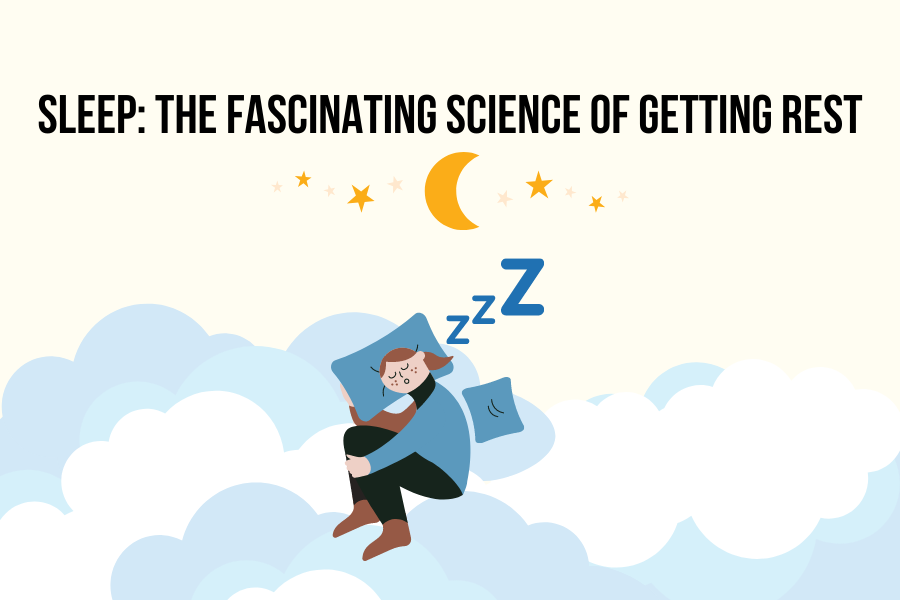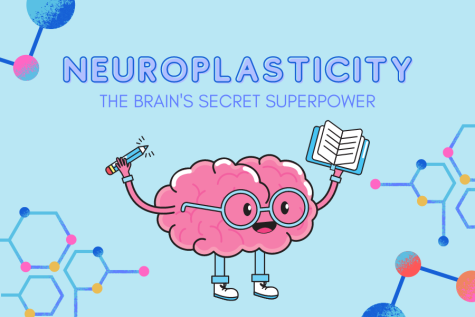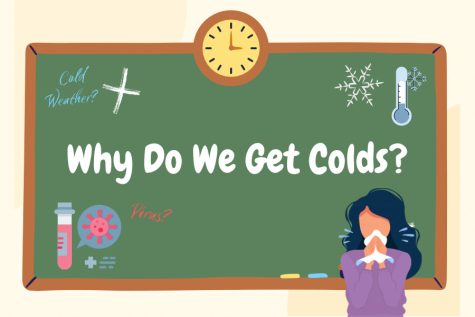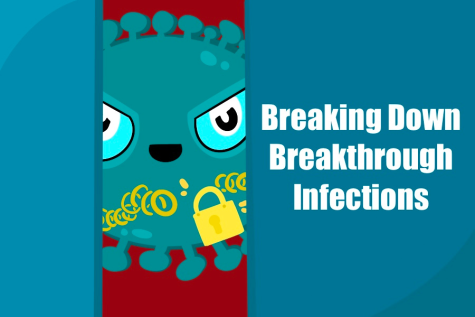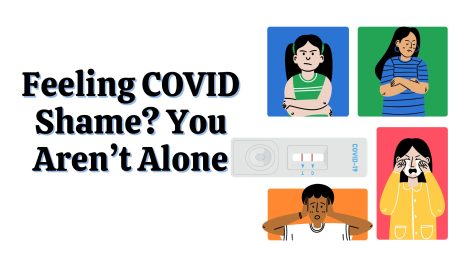Sleep: The Fascinating Science of Getting Rest
You’ve probably been told countless times that sleep is a matter of utmost importance in maintaining a healthy lifestyle, but have you ever wondered what really happens during sleep? As it turns out, sleep is a very complicated process, without one definite biological purpose. Sleep is still being researched extensively today, but scientists are starting to understand some of the factors at play while we sleep. In this article, we will briefly examine the science of sleeping and its necessity in our survival.
Sleep cycles
Most people assume that sleep is a continuous state of rest since we are unconscious for its entirety. However, sleep is actually very dynamic and not uniform. Throughout each night, people typically experience four different stages of sleep that repeat in a continuous cycle until they awaken. The stages of this sleep cycle are separated based on differing brain waves and neural activity that occur during each stage. The first three stages are labeled non-REM sleep, while the fourth stage is labeled REM, short for rapid eye movement. On an average night, a person goes through 4-6 sleep cycles, with each cycle lasting roughly 90 minutes.
The first non-REM sleep stage is the crossover between wakefulness and sleep. You can think of this stage as “dozing off.” Stage 1 only lasts several minutes, so a person who remains undisturbed can progress into stage 2 quickly. During the second stage of the sleep cycle, body temperature drops, muscles relax, and eye movements stop. Breathing and heart rate also decrease as the body prepares itself for deep sleep. The third stage of non-REM sleep is a period of deep sleep that is believed to promote bodily growth and recovery. During this phase, delta waves are exhibited in brain activity, which is commonly associated with deep sleep. This is the kind of sleep that allows you to feel refreshed in the morning. Stage 3 of the sleep cycle occurs in longer periods at first, but the time spent in this stage decreases later into the night.
After a person has gone through the non-REM stages of the sleep cycle, they move into the rapid eye movement (REM) stage, which accounts for about 25% of sleep in adults. REM sleep is a very interesting state due to its almost paradoxical nature. Firstly, REM gets its name from the fact that people’s eyes usually dart around rapidly during this stage even though they are unconscious. This is quite intriguing because every other muscle in the body is completely paralyzed, excluding the heart and muscles necessary for breathing. In addition, brain waves and activity appear very similar to those when awake, along with a faster heart rate and breathing. One proposed explanation for the eye movements and brain activity during REM sleep is because we are dreaming. Scientists know that nearly all dreams occur in the REM stage of the sleep cycle, so it would make sense that our brains are more active during this period to direct the imagery of our dreams. REM plays a significant role in cognitive functions, such as consolidating information, memory, learning, and creativity. Furthermore, the time spent in REM sleep dramatically increases with each sleep cycle that occurs throughout the night. Fun fact: this explains why we are more likely to remember dreams that occur closer to the morning — since we spend more time in REM the longer we are asleep, we also dream more. After REM, a person will usually enter stage 1 of the sleep cycle again, repeating the process until they wake up.
Regulation of sleep
Although what happens during sleep is very important, the regulation of our sleep schedule is perhaps even more crucial to sleeping in general. In other words, we need to become sleepy in order to fall asleep. Unlike other biological needs such as hunger, the body is very adamant about getting the sleep it needs. After all, your brain cannot force you to eat when you are hungry, but it can make you accidentally fall asleep in first-period history class even if you try not to.
In terms of sleep regulation, your body has two built-in controls to determine when it needs to sleep. The first control is the circadian rhythm. You can think of this as an internal 24-hour clock that makes you feel sleepy at night and alert in the morning. The circadian rhythm coordinates itself by using external cues, such as light and temperature. This will tell the brain when night has fallen and cause it to release melatonin, a hormone that makes you become drowsy. The circadian rhythm also explains jet lag because it takes a while to adjust to different time zones. During the adjustment period, the internal clock is mismatched with the actual time.
The second sleep control is known as sleep-wake-homeostasis or the sleep drive. The sleep drive is relatively simple compared to the circadian rhythm. Basically, the longer you are awake, the sleepier you become. Research indicates that the buildup of a chemical called adenosine in the brain is what fuels the sleep drive. Adenosine is a waste product that accumulates in the brain while we are awake and inhibits neural activity, thereby making us sleepy. Fun fact: caffeine works to keep us awake by blocking adenosine receptors, reducing our sleep drive. As we spend more time awake, more adenosine accumulates in the brain, thus enhancing our sleep drive. One’s sleep drive can also become stronger when you get less sleep than you need, possibly leading to napping in class.
Why do we sleep?
Now that we have gained a general understanding of how sleep works, you may be left wondering: “Well, why do we even sleep in the first place?” The answer to that question is complicated. As of now, scientists have not yet determined the definitive reason why animals have evolved to sleep, but research has revealed a vast number of benefits that come from sleeping and the deadly consequences of neglecting it.
One known function of sleep is that it allows our brains to work properly during the day. This understanding is fairly intuitive, since the brain rests and recovers during sleep. Numerous studies point to the fact that sleep plays a very significant role in brain plasticity, the ability for the brain to adapt and learn. Recall that REM sleep heavily promotes cognitive abilities, such as memory and problem-solving skills. Sleeping may even help us solve problems by creating loose, subconscious associations as we rest. Another intuitive function of sleep is that it allows our bodies to recover and grow. As mentioned before, stage 3 of the sleep cycle boosts the immune system and muscle growth. When a person doesn’t sleep enough, they are at higher risk of depression, high blood pressure, migraines, and illness.
Moreover, recent research is starting to reveal that sleep also promotes the removal of waste material in the brain. One mechanism of waste removal is the glymphatic system, a specialized group of vessels that eliminate waste from the brain. During sleep, brain cells shrink, allowing the lymphatic system to use cerebrospinal fluid which flushes out waste products that have accumulated in the space between the cells. Sometimes, these waste products can be deadly. Beta-amyloid, for example, can accumulate in plaques that cause Alzheimer’s and dementia. In fact, a study of 28,000 participants conducted by Harvard Medical School in 2020 revealed that individuals of age 65 and over who slept less than 5 hours per night were twice as likely to develop dementia. They were also twice as likely to die, compared to those who slept 6-8 hours. Although these results may seem daunting, the key takeaway is that sleep flushes out waste products in the brain that could potentially be deadly.
So, how much sleep do you need?
Finally, if sleep is so important, how much of it should we get? While there is no definitive answer once again, the CDC recommends that teens get 8-10 hours of sleep per night and adults get at least 7 hours. If you’re not getting enough sleep, don’t worry. There are ways to salvage a crumbling sleep schedule and change it for good. Some simple places to start would be getting a comfortable pillow and making sure your room is quiet. As you now know, our circadian rhythms are precise and don’t like to be changed. We can use this fact to our advantage by setting a uniform bedtime, making sure to go to bed and wake up at roughly the same time each day. This will help our circadian rhythm and improve the quality of sleep. Going outside in the sun will also improve sleep quality since circadian rhythms are sensitive to light. Finally, avoid caffeine before going to bed, as it will block acetylcholine and reduce the sleep drive.
All in all, sleep is crucial to both our physical and mental health, making it one of the most important things to pay attention to each day. By using your knowledge of how sleep works, you can develop sustainable and healthy sleeping habits that will pay off in the long run. Whether it be solving a difficult problem on a math exam or running a marathon, sleep will help in more ways than you would think.
Works Cited
Calechman, Steve. “Sleep to Solve a Problem.” Harvard Health, 24 May 2021, www.health.harvard.edu/blog/sleep-to-solve-a-problem-202105242463.
CDC. “CDC – How Much Sleep Do I Need? – Sleep and Sleep Disorders.” CDC, 2019, www.cdc.gov/sleep/about_sleep/how_much_sleep.html.
Foley, Logan. “Stages of Sleep.” Sleep Foundation, 14 Aug. 2020, www.sleepfoundation.org/how-sleep-works/stages-of-sleep.
Johns Hopkins Medicine. “The Science of Sleep: Understanding What Happens When You Sleep.” Johns Hopkins Medicine Health Library, 2019, www.hopkinsmedicine.org/health/wellness-and-prevention/the-science-of-sleep-understanding-what-happens-when-you-sleep.
MD, Andrew E. Budson. “Sleep Well — and Reduce Your Risk of Dementia and Death.” Harvard Health, 3 May 2021, www.health.harvard.edu/blog/sleep-well-and-reduce-your-risk-of-dementia-and-death-2021050322508.
National Institute of Neurological Disorders and Stroke. “Brain Basics: Understanding Sleep | National Institute of Neurological Disorders and Stroke.” Nih.gov, 13 Aug. 2019, www.ninds.nih.gov/Disorders/Patient-Caregiver-Education/Understanding-Sleep.
National Institutes of Health. “Sleep Deprivation Increases Alzheimer’s Protein.” National Institutes of Health (NIH), May 2018, www.nih.gov/news-events/nih-research-matters/sleep-deprivation-increases-alzheimers-protein.
“Understanding the Glymphatic System.” Neuronline.sfn.org, neuronline.sfn.org/scientific-research/understanding-the-glymphatic-system#:~:text=The%20glymphatic%20system%20is%20a.

